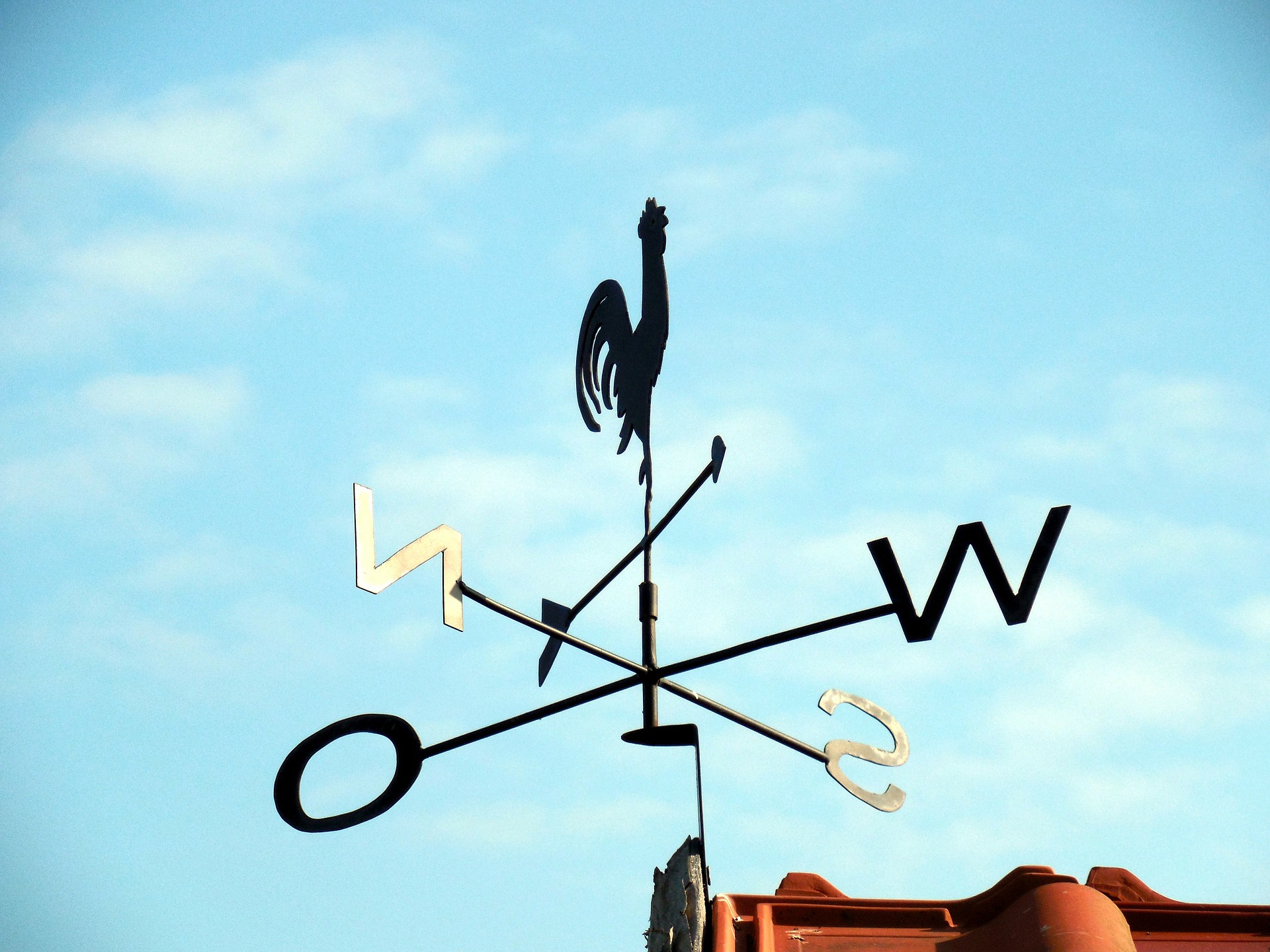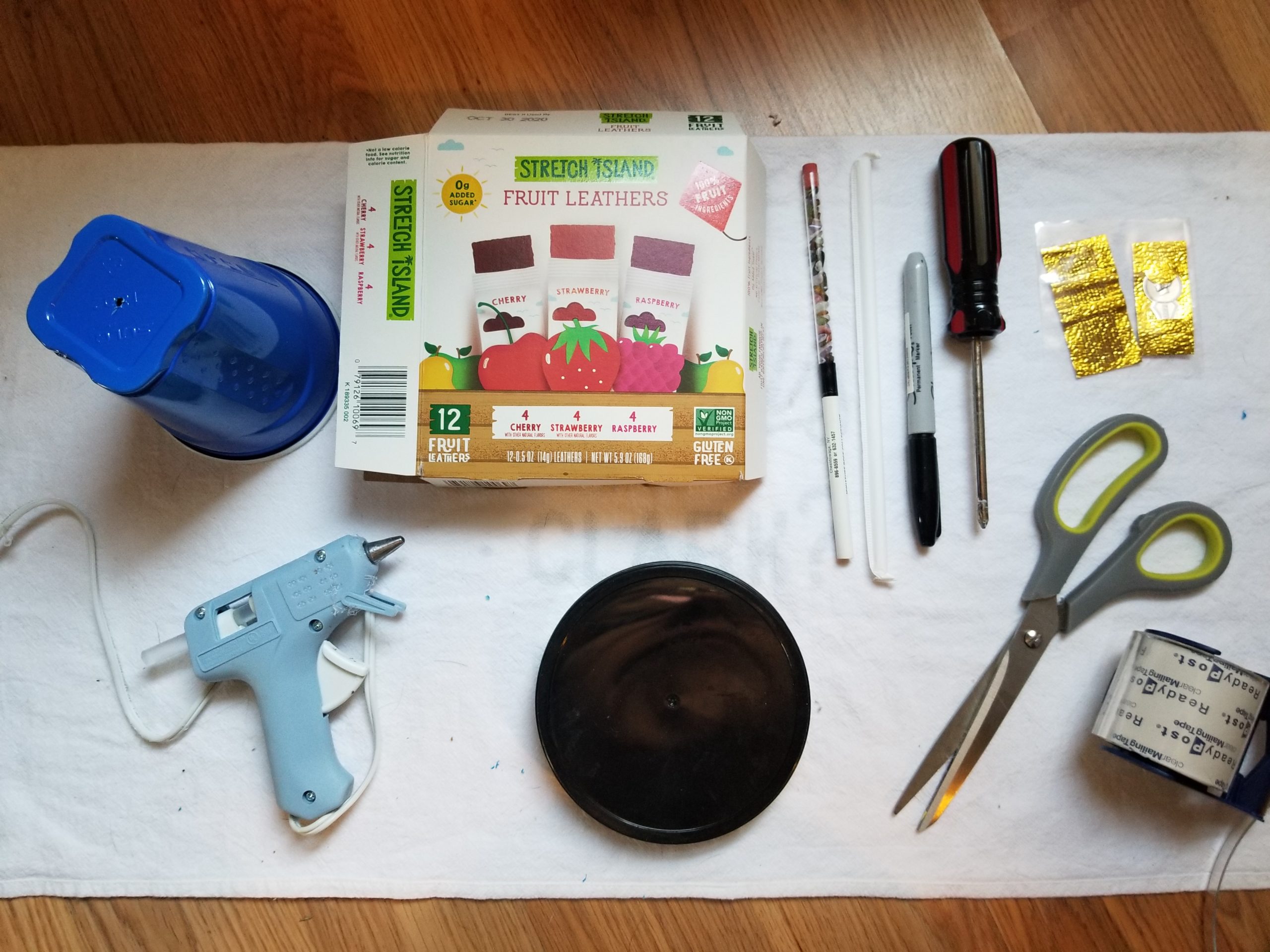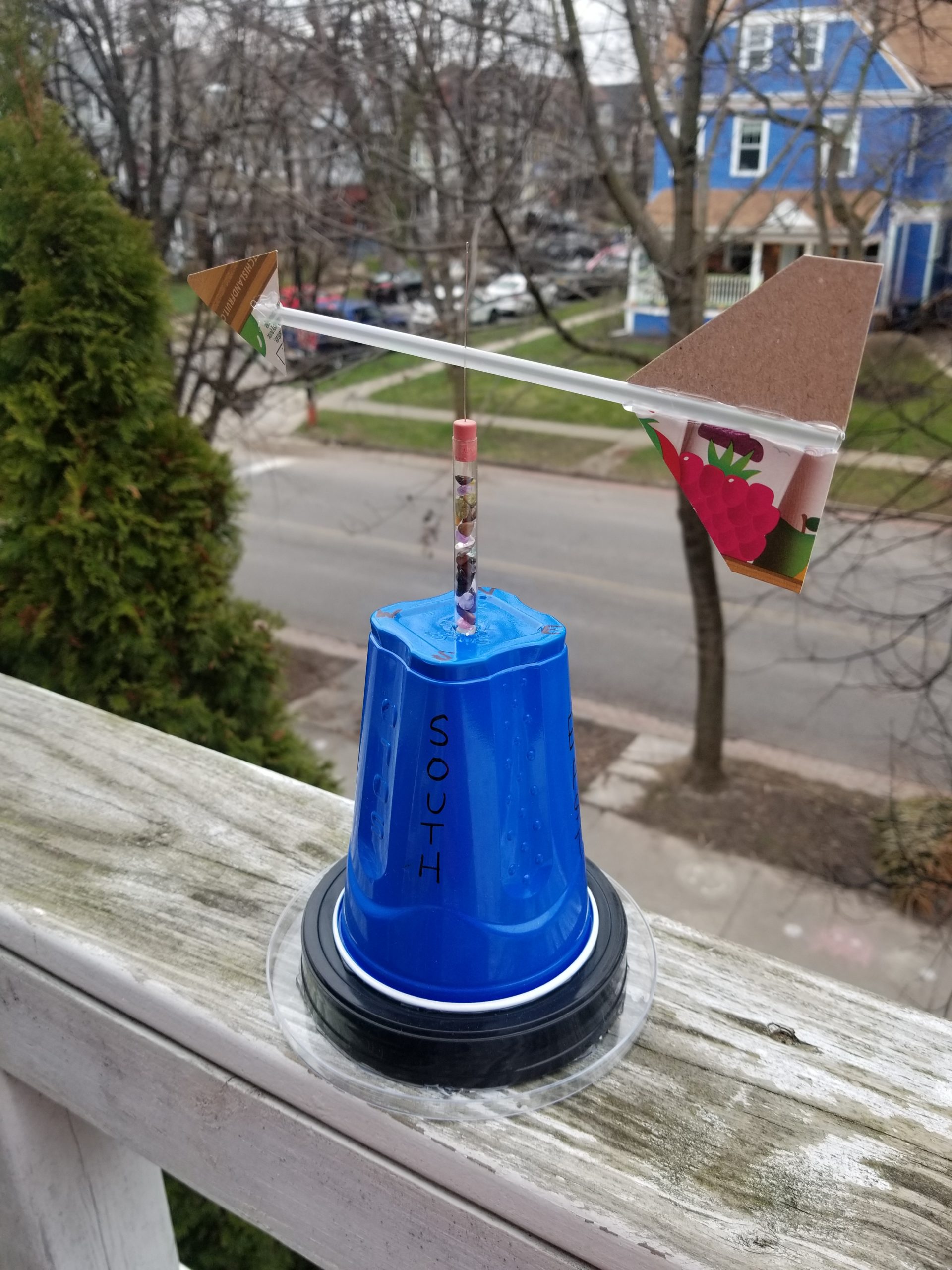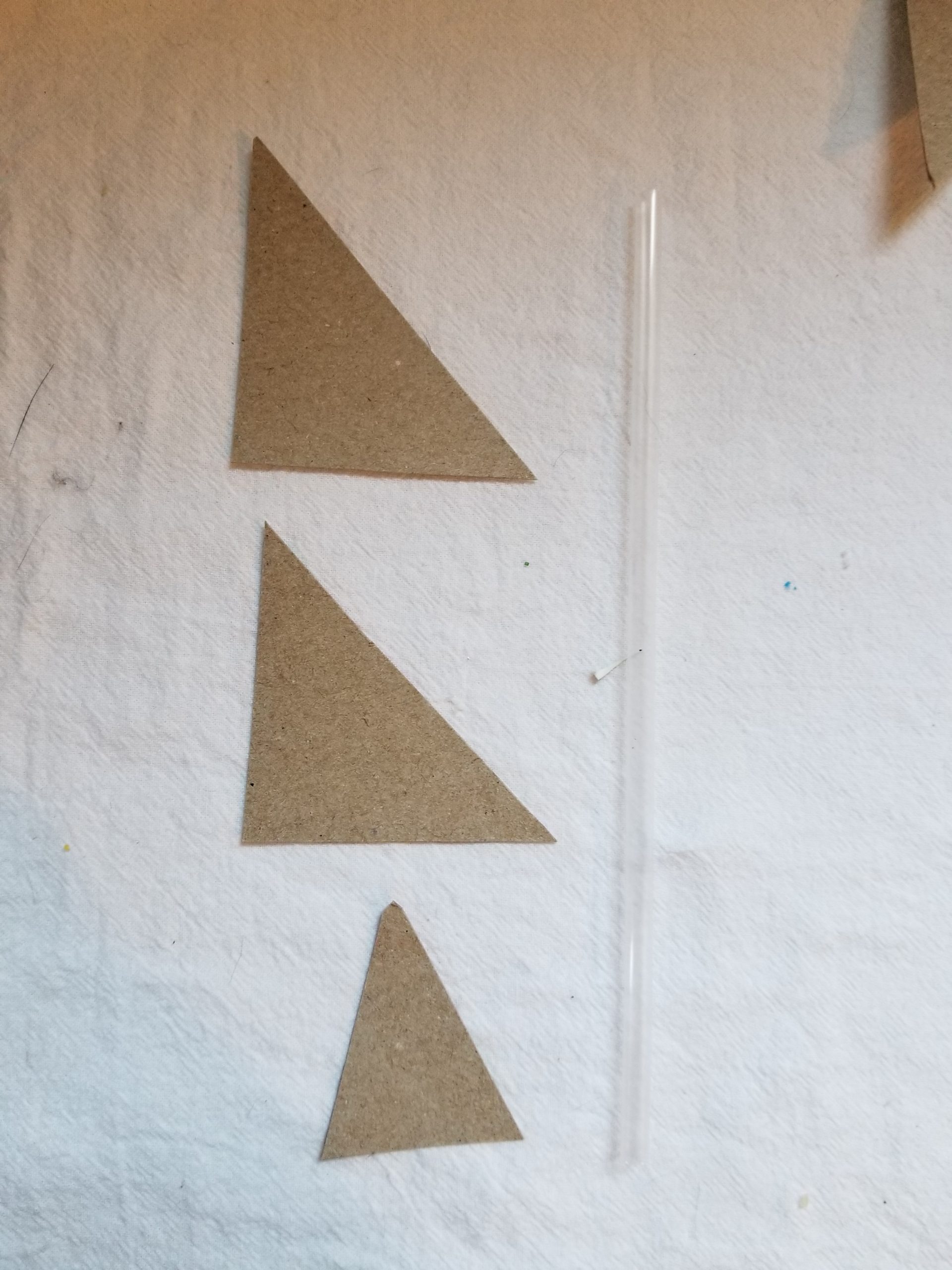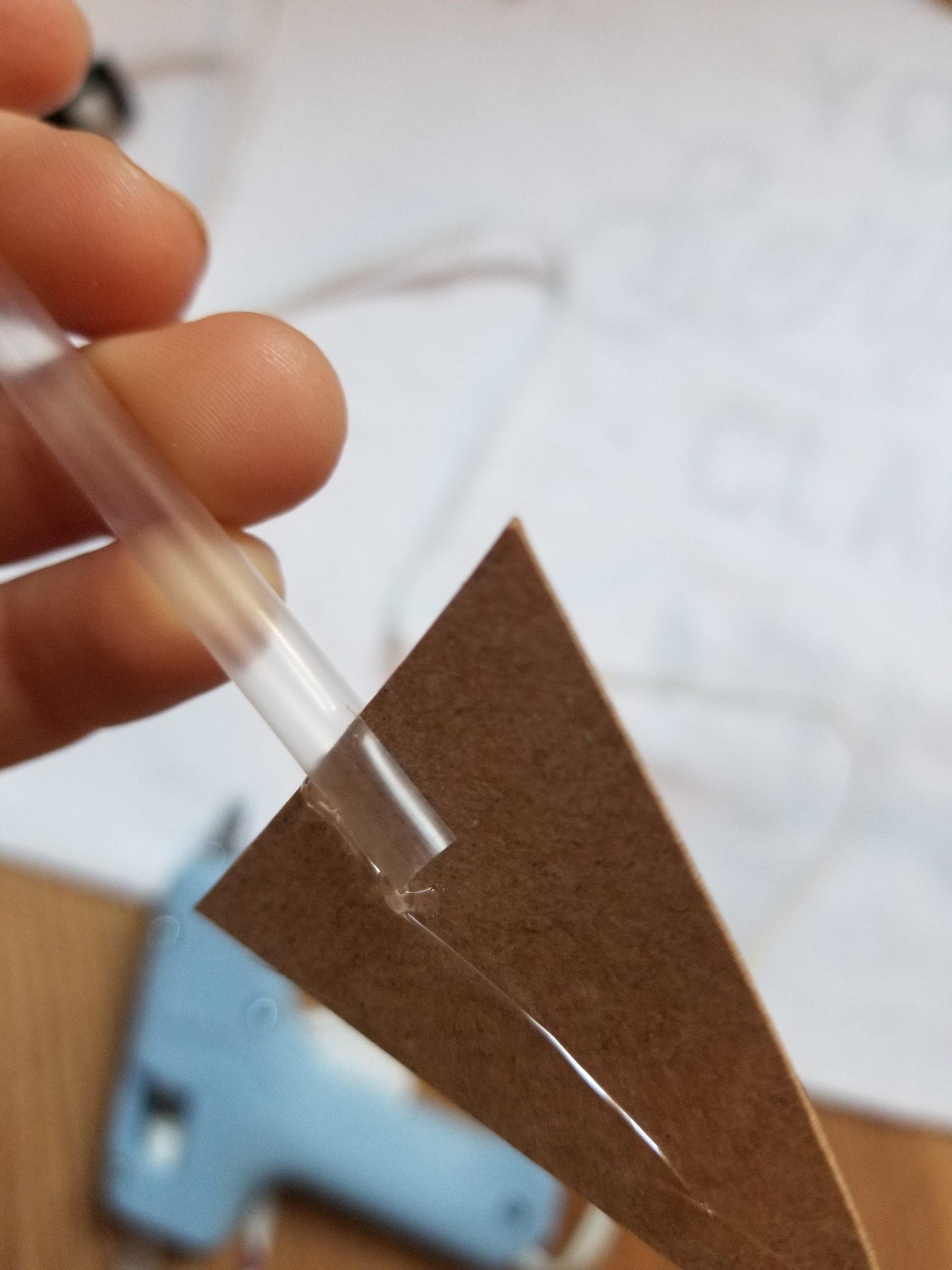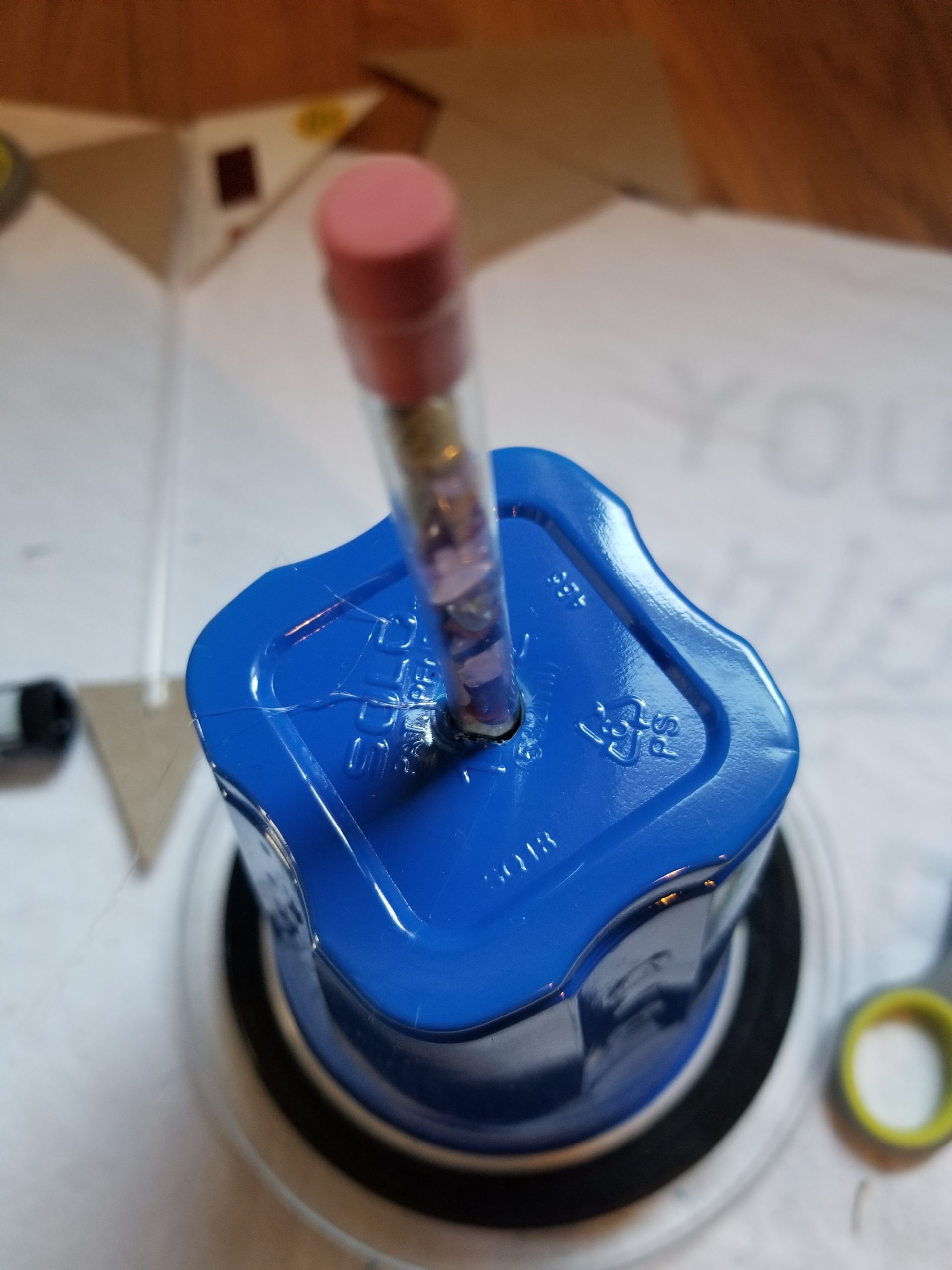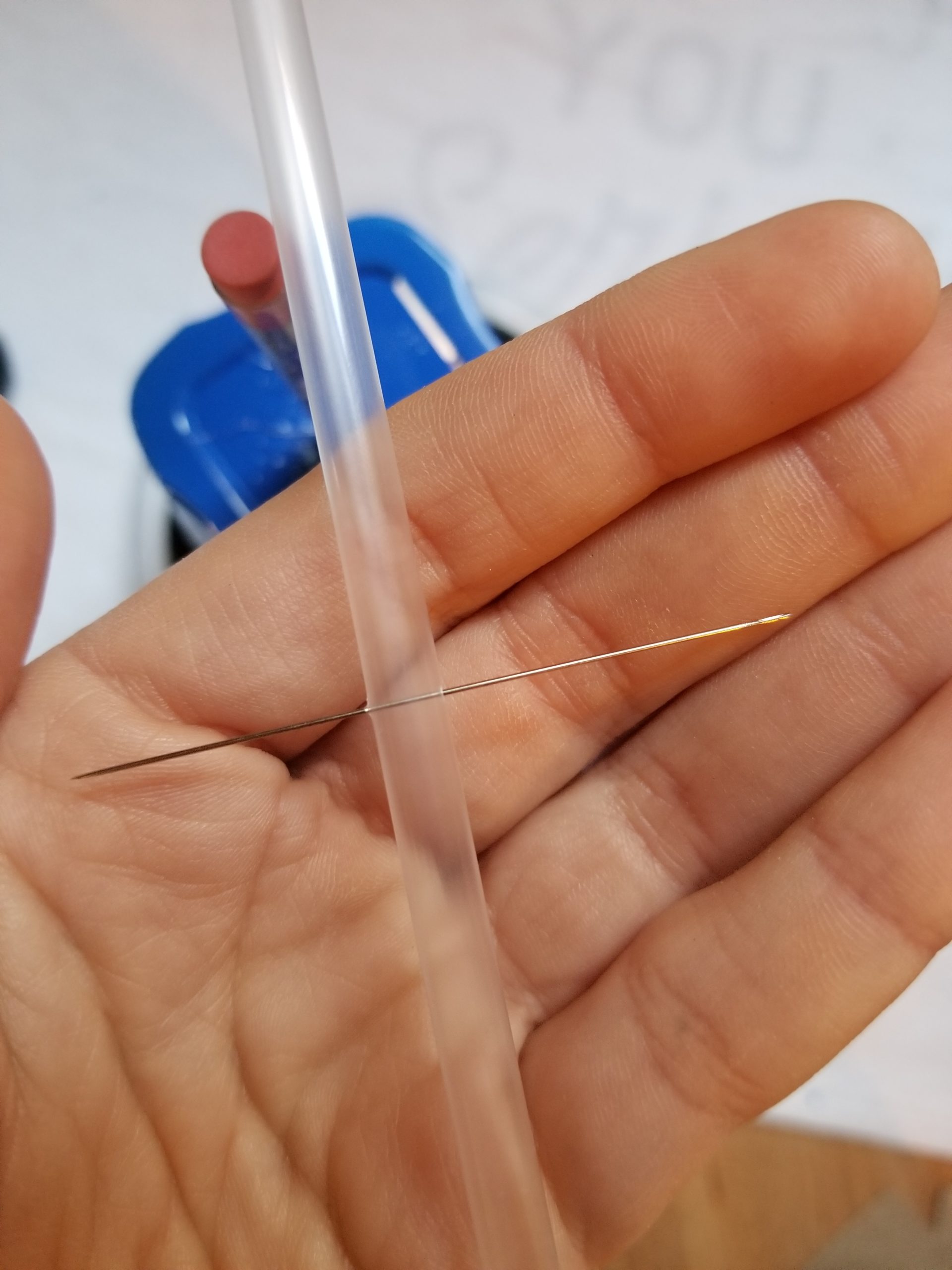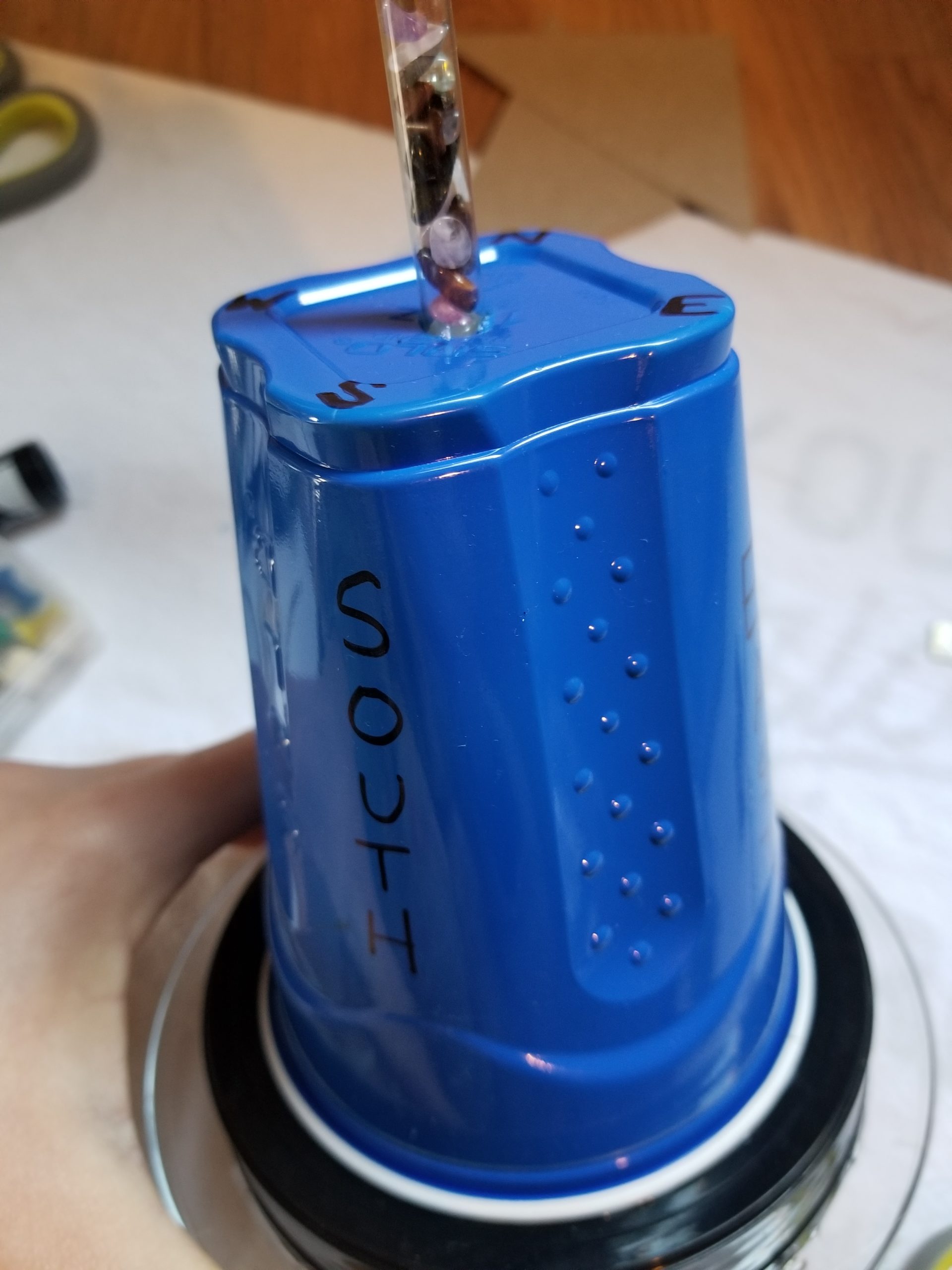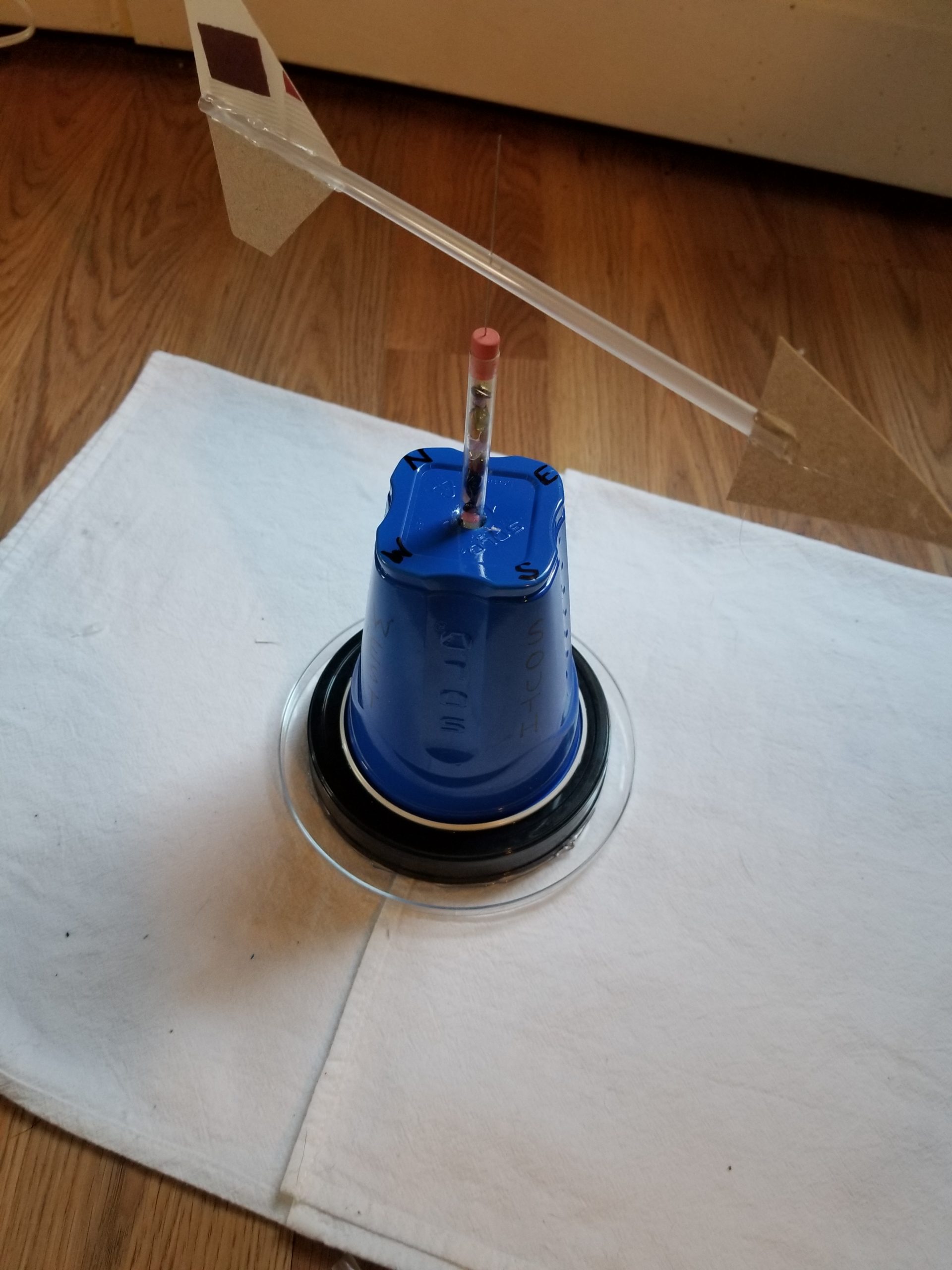DIY Wind Vane
Have science fun as a family! Complete activities with parental supervision.
Materials:
- Thick paper or cardstock
- Plastic straw
- Disposable plastic cup
- Pencil with a good eraser
- Needle or long push pin
- Something wide and flat (for added stability)
- Scissors
- Permanent marker
- Hot glue or light weight tape
Procedure
- Cut 2 right triangles and 1 isosceles triangle out of the cardstock (see Photo #2).
- Attach the right triangles to one end of the straw using hot glue or tape to create fins.
- Attach the isosceles triangle to the other end of the straw by cutting a small slit and sliding the triangle in. Hold in place with hot glue or tape.
- Poke a hole in the bottom of the cup and place the pencil into the bottom so the eraser side is sticking out of the top.
- Push the needle or long push pin through the center of the straw and into the eraser of the pencil.
- Attach the cup to a base, to increase stability, using hot glue or tape.
- Draw on directional markings (North, South, East, West) every 90 degrees using the permanent marker.
- Station your weather vane outside to align with North, South, East, and West (early morning or late evening are the best times to position your weather vane outside, as the sun rises in the East and sets in the West).
- Be sure to take a picture or video to share in the Facebook comments on the Buffalo Museum of Science or Tifft Nature Preserve pages!
What’s it all about?
Weather vanes can be dated as far back as 48 BCE and are still in use by meteorologists and other scientists today!
Wind occurs when air moves from high pressure to low pressure. When the weather is bright and sunny with few clouds in the sky, the air pressure is high. When you get rain, snow or clouds, the air pressure is low. Often, high winds signal a change in weather.
Try It!
Look at your weather vane. Can you tell which direction the wind is coming from and which direction the wind is going? Does air from a certain direction bring a particular type of weather? Why do you think weather vanes usually sit at the highest point of a building?
